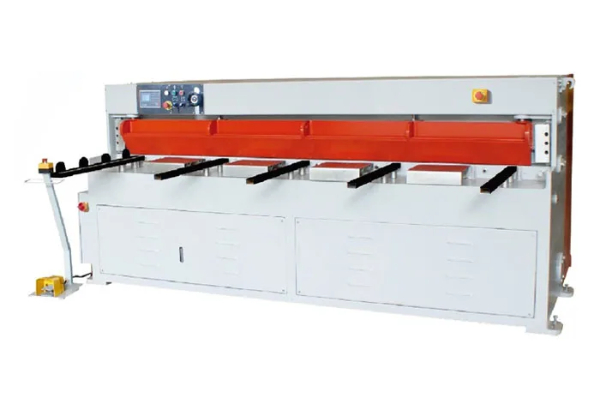
Precision Performance- Achieving Accurate Bends with Metal Bending Brakes
- By:Metmac
- 2024-04-29
- 175
Precision performance is paramount in the realm of metal fabrication, particularly when it comes to achieving accurate bends using metal bending brakes. This comprehensive article delves into the intricate aspects of precision bending, providing practical insights and expert guidance to empower fabricators in delivering exceptional results.
Factors Influencing Bending Accuracy:
Material Properties: The characteristics of the metal being bent, such as its thickness, hardness, and grain structure, can significantly impact bending accuracy. Understanding the material’s properties allows fabricators to optimize bending parameters and avoid deformation or cracking.
Machine Capabilities: The precision and performance of the metal bending brake itself play a crucial role. Factors such as machine rigidity, beam deflection, and ram parallelism must be considered to ensure precise and repeatable bends.
Calibration and Maintenance:
Machine Calibration: Regular calibration is essential to maintain the accuracy of metal bending brakes. This involves adjusting the machine’s parameters to ensure that the ram travels the specified distance and applies the correct force for each bend.
Preventive Maintenance: Routine maintenance, including lubrication, cleaning, and inspection, extends the machine’s lifespan and minimizes the risk of breakdowns or errors that could compromise bending accuracy.
Techniques for Enhancing Accuracy:
Bend Allowance: The bend allowance refers to the additional material required to compensate for the material’s thickness and the desired bend angle. Calculating the correct bend allowance is critical for achieving precise results.
Springback Adjustment: Metal exhibits a tendency to spring back slightly after bending. Understanding and accounting for springback in the bending process is essential to produce bends that meet the desired specifications.
Quality Control and Inspection:
Visual Inspection: A thorough visual inspection of each bend can identify any obvious flaws or deviations from the desired specifications.
Dimensional Measurement: Using measuring tools such as calipers or a coordinate measuring machine (CMM) allows for precise verification of bend angles, radii, and other critical dimensions.
Non-Destructive Testing (NDT): Advanced NDT techniques, such as ultrasonic testing or magnetic particle inspection, can reveal any internal defects or discontinuities that could impact the bend’s structural integrity.
Conclusion:
Achieving accurate bends with metal bending brakes requires a combination of material understanding, machine optimization, regular maintenance, meticulous techniques, and rigorous quality control. By embracing these principles, fabricators can consistently deliver high-quality bends, meeting the precise specifications and expectations of their customers.
-
Advanced Sheet Metal Rolling, Cutting, and Folding Machines for Efficient Fabrication
2025/10/22 -
High-Precision Sheet Metal Bending and Cutting Solutions for Modern Manufacturing
2025/10/22 -
High-Precision Solutions from Leading Sheet Metal Cutting Machine Manufacturers
2025/09/11 -
Reliable Sheet Metal Equipment for Sale to Support Precision Fabrication
2025/07/17
-
Advanced Sheet Metal Rolling, Laser Cutting, and Folding Machines for Precision Fabrication
2025/10/31 -
High-Performance Sheet Metal Bending and Cutting Machines for Modern Fabrication
2025/10/31 -
High-Quality Sheet Metal Equipment for Sale: Efficient Solutions for Modern Manufacturing
2025/10/31 -
High-Performance Sheet Metal Equipment for Sale: Forming and Shearing Solutions for Modern Fabrication
2025/10/22
-
A Guide to the Latest Innovations in Sheet Metal Folding Machines
2024/11/29 -
Key Features to Consider When Investing in a Sheet Metal Folding Machine
2024/11/28 -
Enhancing Precision with Advanced Sheet Metal Folding Machines
2024/11/27 -
How to Choose the Right Sheet Metal Folding Machine for Your Workshop
2024/11/26






